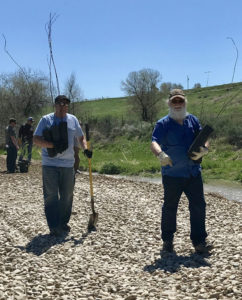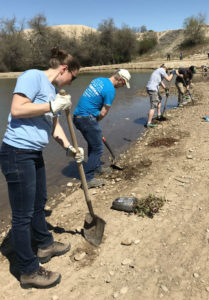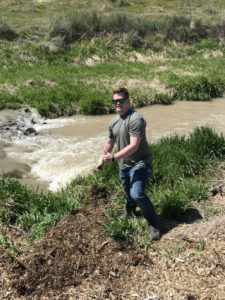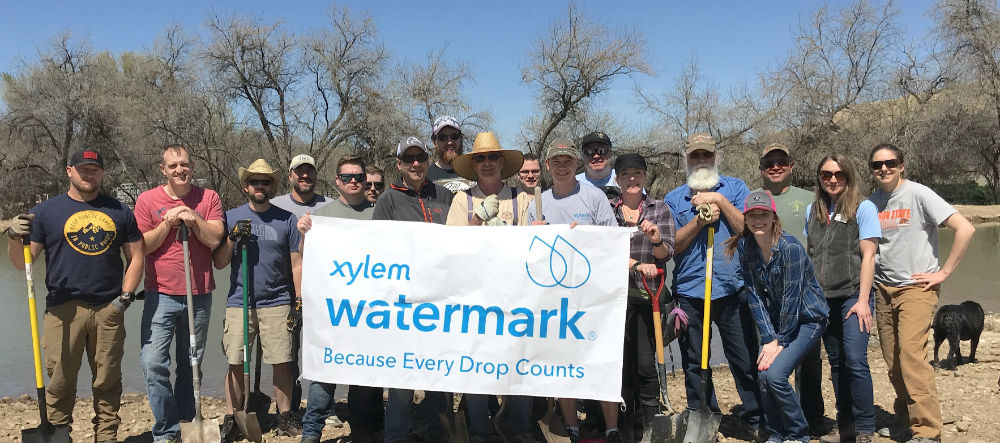
By Erin Brooks and Liz Paul
Many hands made quick work of planting over 300 trees and shrubs at Jason Cagle’s constructed wetland in Greenleaf on April 20. The work involved digging into hard-packed dirt, fording the high-flowing Pipe Gulch Creek, working on steep hillsides and remembering how and where to plant the many species of plants. The Boise River Enhancement Network (BREN) and NRCS recruited more than 20 volunteers to help, most of them from Xylem, Inc, BREN’s 2018 Corporate Stewardship partner. Xylem employees will be participating in three river projects with BREN in 2018.
The Cagle project started in 2017 when Jason approached the NRCS with his idea to transform a weed-infested lot into a habitat-rich wetland. The site has excellent water availability, and a design was created by NRCS engineer Doug Higbee that included removing the large Russian olive trees from along the ditch and revegetating with native plants, excavating a small wetland and planting willows and shrubs around it, as well as establishing native plants along a second tailwater ditch that runs through the property and on the steep hillside. The project totals 2.3 acres.
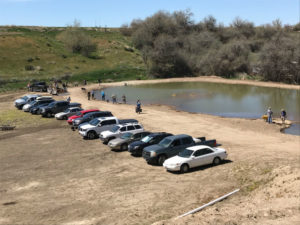
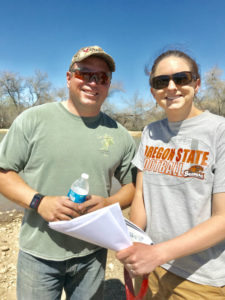
Development in the lower Boise River watershed has resulted in a significant loss of wetlands, and cooperative projects like this can provide important habitat for native birds and animals. Wetlands also help to reduce nutrient in the water that passes through them. Water quality is a major concern in the Boise River watershed. The NRCS can assist landowners with similar projects through the Environmental Quality Incentives Program which helps to offset the costs for projects that have natural resource benefits.
Due to a long history of land alteration, wetland and riparian areas along the Boise River have been reduced in extent and function. The Boise River Enhancement Plan recommends creation of constructed wetlands to replace some of the lost habitat and enhance water quality.
